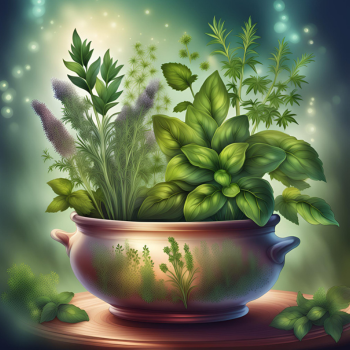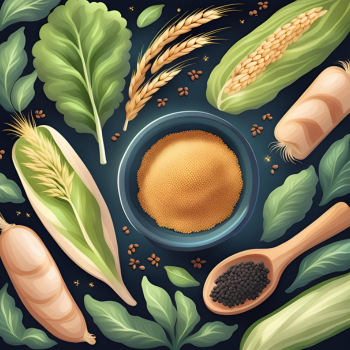Relieve Chronic Pain Naturally with Traditional Chinese Medicine: Herbal Remedies and TCM Solutions
Sep 11th 2024
Relieve Chronic Pain Naturally with Traditional Chinese Medicine: Herbal Remedies and TCM Solutions

Understanding Chronic Pain: Causes, Symptoms, and Natural Relief
Traditional Chinese Medicine (TCM) offers a holistic approach to chronic pain relief. This ancient healthcare system includes various practices such as acupuncture, herbal medicine, and tai chi. By focusing on the restoration of balance and harmony within the body, TCM aims to regulate the flow of qi (vital energy), making it an effective method for natural pain relief.
Exploring natural methods for managing chronic pain is essential for those seeking alternatives to conventional treatments. With TCM, you can benefit from:
- Chinese medicine herbs for pain: Utilized to target specific ailments like arthritis and back pain.
- Holistic pain relief: Integrating multiple modalities for a comprehensive approach.
- Natural inflammation relief: Reducing symptoms without relying on synthetic drugs.
Understanding how Traditional Chinese Medicine can help relieve chronic pain naturally opens the door to a more balanced and healthier lifestyle.

Understanding Chronic Pain, Causes and Effects.
What is Chronic Pain?
Chronic pain is a long-lasting, debilitating condition that persists for weeks, months, or even years. Unlike acute pain, which is a direct response to injury and subsides as the body heals, chronic pain lingers and often worsens over time. It can severely affect daily life, limiting physical activity, disrupting sleep, and taking a toll on mental health.
Common Chronic Pain Conditions: Arthritis, Fibromyalgia, and Back Pain
Arthritis: This condition involves inflammation in one or more joints, resulting in persistent pain, stiffness, and swelling. Osteoarthritis and rheumatoid arthritis are the most common types, each affecting mobility and quality of life in unique ways.
Fibromyalgia: This syndrome is characterized by widespread musculoskeletal pain, fatigue, and sensitivity to touch. It often comes with additional symptoms like difficulty sleeping, memory issues (often called "fibro fog"), and mood disturbances, leading to challenges in daily living.
Chronic Back Pain: One of the most widespread types of chronic pain, back pain can arise from muscle strain, herniated discs, or structural issues like spinal stenosis. Poor posture, prolonged sitting, and injury are common causes.
Each of these conditions not only causes physical discomfort but also impacts emotional well-being, leading to frustration, anxiety, and even depression. Chronic pain can interfere with personal relationships, work productivity, and the ability to enjoy life.
The Profound Impact of Chronic Pain on Daily Life
Living with chronic pain is challenging, as it doesn’t just affect the body—it impacts the mind and spirit. Some of the most common ways chronic pain interferes with daily life include:
Reduced Mobility: Chronic pain often limits flexibility and range of motion, making it difficult to perform even simple tasks like climbing stairs, bending, or lifting objects.
Difficulty with Everyday Activities: Basic activities like cooking, cleaning, and self-care may become overwhelming due to persistent pain and fatigue.
Mental Health Challenges: The emotional toll of chronic pain can lead to anxiety, depression, and feelings of helplessness. Living in constant discomfort often results in frustration, irritability, and difficulty focusing.
Strain on Relationships: Chronic pain can limit social interaction, create dependence on others, and strain both personal and professional relationships. The inability to engage in social activities or perform well at work may cause isolation or feelings of inadequacy.
The Foundations of Traditional Chinese Medicine (TCM)
Traditional Chinese Medicine (TCM) is built on important principles that guide its practices. These principles involve the ideas of Qi, Blood, and the equilibrium between Yin and Yang.
Key Concepts in TCM
1. Qi
Often referred to as vital energy, Qi is considered the life force that flows through the body. It is essential for maintaining health and vitality. Blockages or imbalances in Qi are believed to cause illness and pain.
2. Blood
In TCM, Blood is more than just a physical substance; it also nourishes and moistens body tissues, ensuring proper function. Insufficient or stagnant Blood can lead to chronic pain conditions.
3. Yin and Yang
These are complementary forces that need to be balanced for optimal health. Yin represents qualities like cold, rest, and darkness, while Yang signifies heat, activity, and light. An imbalance between Yin and Yang can result in various health issues, including chronic pain.
How These Principles Relate to Chronic Pain
Chronic pain from a TCM perspective often stems from imbalances in these foundational elements:
Qi Stagnation: When Qi does not flow smoothly, it can result in pain and discomfort. Techniques like acupuncture aim to unblock these pathways.
Blood Stasis: Similar to Qi stagnation, poor circulation of Blood can lead to chronic pain. Herbal remedies are commonly used to improve blood flow.
Yin-Yang Imbalance: Conditions like arthritis might be viewed as an excess of Yang (inflammation) or a deficiency of Yin (nourishment). Treatments focus on restoring this delicate balance.
Understanding these principles helps in tailoring effective TCM chronic pain solutions that address the root causes rather than just alleviating symptoms.
Herbal Remedies in TCM: Nature's Ally Against Chronic Pain

Herbs to Reduce Chronic Pain: Corydalis, Frankincense, and More
Natural remedies for chronic pain relief.
Traditional Chinese Medicine (TCM) offers a vast array of herbal remedies for chronic pain relief, leveraging nature's bounty to combat persistent discomfort. These herbal treatments for pain have been refined over centuries and are integral to many TCM formulations aimed at alleviating pain and inflammation.
Corydalis root is one of the most potent Chinese herbal pain relief options available.
Active Constituents: Contains alkaloids such as dehydrocorybulbine (DHCB) and tetrahydropalmatine (THP).
Traditional Usage: Known for its ability to invigorate blood circulation and alleviate pain, particularly effective for menstrual cramps, chest pain, and abdominal pain.
Modern Research: Studies have shown that DHCB acts similarly to morphine by blocking pain signals in the brain but without the addictive side effects.
2. Frankincense Resin (Ruxiang)
Frankincense resin is celebrated in both TCM and Ayurvedic medicine for its powerful anti-inflammatory properties.
Active Constituents: Rich in boswellic acids.
Traditional Usage: Used to reduce swelling and alleviate joint pain, making it particularly beneficial for conditions like arthritis.
Modern Research: Boswellic acids have been found to inhibit inflammatory pathways, providing relief from chronic inflammatory conditions.
Safflower flower is frequently used in TCM to promote blood flow and reduce pain.
Active Constituents: Contains flavonoids such as carthamin.
Traditional Usage: Commonly used to treat traumatic injuries, alleviate menstrual discomfort, and reduce joint pain.
Modern Research: Studies suggest that safflower flower extracts can significantly reduce inflammation and improve blood circulation, aiding in the healing of injuries.
Quality Control Issues
Unregulated herbal products may be contaminated with toxic substances or adulterated with incorrect ingredients.
Ensure you source herbs from reputable providers who adhere to stringent quality control measures.
Correct Dosing Practices
Improper dosing can lead to ineffective treatment or adverse effects.
Always follow prescribed doses from qualified TCM practitioners.
Interactions with Other Medications
Some herbs may interact with conventional medications.
Consult healthcare providers before combining herbal supplements with other treatments.
Safety Considerations When Using Herbal Remedies for Pain Management
While herbal remedies such as Corydalis root, Frankincense resin, and Safflower flower can provide significant relief for chronic pain, it's essential to follow safety guidelines to ensure their effectiveness and avoid potential risks. The use of Traditional Chinese Medicine (TCM) herbs for pain management offers natural, holistic solutions, but awareness of safety concerns is vital.
One major risk involves contamination, as unregulated herbal products may contain toxic substances like heavy metals or pesticides, which could worsen health conditions. This is why we only offer herbs that are GMP -Good Manufacturing Practices, as well as offer Certificate of Analysis on all our products.
Additionally, incorrect dosing practices can lead to under dosing or overdosing, especially due to inconsistencies in the concentration of active ingredients across different batches. Another critical factor to consider is the interaction of herbal remedies with prescription medications. Herbs such as Corydalis, Frankincense, and Safflower may interfere with conventional drugs, reducing their effectiveness or increasing the likelihood of side effects.
The role of herbal medicine within the framework of TCM is significant in addressing various facets of chronic pain syndromes. However, consulting a qualified healthcare provider trained in TCM is advisable before beginning any new herbal regimen. This ensures that you receive tailored advice and minimize risks associated with unregulated products.
Integrating Lifestyle Practices from TCM into Your Chronic Pain Management Routine
 Tai Chi Benefits for Chronic Pain
Tai Chi Benefits for Chronic Pain
Gentle movement-based therapies such as Tai Chi offer significant benefits for those managing chronic pain. This ancient practice combines slow, deliberate movements with deep breathing and meditation, promoting both physical resilience and emotional balance. Studies have shown that Tai Chi can be particularly effective for conditions like knee osteoarthritis and fibromyalgia.
Key Benefits of Tai Chi
- Improved Flexibility and Strength: Tai Chi helps enhance muscle strength and flexibility, which can alleviate symptoms of chronic pain.
- Balance and Coordination: Regular practice improves balance and coordination, reducing the risk of falls in individuals with chronic conditions.
- Stress Reduction: The meditative aspects of Tai Chi reduce stress levels, which can exacerbate chronic pain conditions.
- Enhanced Mental Well-being: The mind-body connection fostered by Tai Chi promotes emotional stability and mental clarity.
How Traditional Chinese Medicine Can Help Relieve Chronic Pain Naturally
Traditional Chinese Medicine (TCM) emphasizes a holistic approach to health, incorporating various lifestyle practices that align with natural healing processes. Integrating TCM into your routine can provide a comprehensive strategy for managing long-term discomfort.
Key Lifestyle Practices in TCM
- Qi Gong: This practice involves controlled breathing and gentle movements to cultivate and balance Qi (vital energy), which is essential for overall wellness.
- Acupressure: Utilizing pressure points on the body to relieve pain, similar to acupuncture but without needles.
- Meditation: Promotes mental peace and reduces stress, which often aggravates chronic pain symptoms.
- Dietary Adjustments: Aligning your diet with TCM principles can support bodily functions and alleviate discomfort.
Practical Tips for Incorporating TCM Practices
- Start with short, daily sessions of Tai Chi or Qi Gong to gradually build your strength and flexibility.
- Incorporate simple acupressure techniques into your daily routine to manage acute pain episodes.
- Allocate time for meditation each day to maintain emotional balance and reduce stress levels.
- Consult a TCM practitioner for personalized dietary recommendations that align with your specific health needs.
Integrating these practices into your daily life can lead to substantial improvements in managing chronic pain, offering a natural complement to conventional medical treatments.
Dietary Recommendations from a TCM Perspective to Support Overall Well-being During Episodes of Persistent Discomfort
Nutrition plays a crucial role in maintaining health, especially when managing chronic pain. Traditional Chinese Medicine (TCM) emphasizes the importance of balance and harmony within the body, achievable through mindful dietary choices. According to TCM principles, certain food groups possess anti-inflammatory properties and can harmonize bodily systems to sustain comfort levels.
Key Food Groups and Their Benefits
Whole Grains: Brown rice, quinoa, and barley are staples known for their ability to nourish Qi and maintain energy levels. These grains also have anti-inflammatory properties that help reduce discomfort.
Leafy Greens: Vegetables like spinach, kale, and bok choy are rich in vitamins and minerals essential for reducing inflammation. They are believed to support the liver’s function, which is crucial in TCM for processing toxins that could exacerbate pain.
Fish and Lean Proteins: Fish such as salmon and mackerel contain omega-3 fatty acids, renowned for their anti-inflammatory effects. Lean proteins including chicken and tofu help build muscle without adding excessive fats that may lead to inflammation.
Herbs and Spices: Ginger, turmeric, and garlic are commonly used in TCM formulations due to their potent anti-inflammatory properties. Adding these herbs to daily meals can aid in alleviating chronic pain symptoms.
Fruits: Berries, particularly blueberries and raspberries, are rich in antioxidants which combat oxidative stress linked to chronic pain. Fruits like apples and pears are cooling in nature according to TCM, providing balance during episodes of discomfort.
Practical Tips for Incorporating TCM Dietary Recommendations

- Balanced Meals: Ensure each meal contains a mix of whole grains, vegetables, proteins, and beneficial herbs.
- Hydration: Drink plenty of water or herbal teas such as chamomile or ginger tea to support digestion and detoxification.
- Moderation: Avoid excessive consumption of cold or raw foods as they may disrupt the digestive system's balance according to TCM principles.
By integrating these dietary recommendations into your daily routine, you can support your body’s natural ability to manage chronic pain more effectively.
The Holistic Approach: Using Different Methods for the Best Results in Chronic Pain Care
A holistic approach to pain management often yields the best results, especially when combining Eastern and Western medical practices. Practitioners trained in both fields tend to integrate different healing methods to create personalized treatment plans. This tailored approach addresses each person's unique experience with persistent discomfort.
Key Methods in a Holistic Approach:
- Acupuncture: Stimulates the central nervous system, releasing chemicals that facilitate healing.
- Herbal Remedies: Utilizes nature-based solutions to target specific pain conditions.
- Lifestyle Changes: Incorporates gentle movement therapies like Tai Chi to promote physical resilience and emotional balance.
- Dietary Adjustments: Focuses on anti-inflammatory foods that harmonize bodily systems.
By combining these various methods, practitioners aim to provide comprehensive care that not only relieves pain but also enhances overall well-being. This integrative strategy highlights the importance of a holistic approach in effectively managing chronic pain.
What Customers Are Saying
"After years of dealing with chronic arthritis pain, I was skeptical about finding any real relief. A friend recommended trying Traditional Chinese Medicine, specifically combining herbs with Tai Chi. After a few months of taking Corydalis root and Frankincense supplements, along with practicing Tai Chi regularly, my pain has significantly reduced. The slow, gentle movements of Tai Chi have improved my flexibility, while the herbs have helped with inflammation. I feel more in control of my body, and I can finally enjoy activities I thought I’d never do again!"
— Linda, 62
Living with fibromyalgia was incredibly difficult, especially when it came to mobility and fatigue. I decided to try Traditional Chinese Medicine, focusing on herbal remedies like Safflower flower and Frankincense, alongside making some lifestyle changes. By incorporating a balanced diet, mindfulness practices, and herbal supplements, I’ve noticed a dramatic improvement in my mobility. The stiffness has reduced, and I can move more freely without constant pain. I’m now able to engage in activities like gentle stretching and walking, which seemed impossible before.
— Mark, 47
Final Thought
Managing chronic pain can feel overwhelming, but with the holistic approach of Traditional Chinese Medicine (TCM), you can find natural, effective relief. By combining time-tested herbal remedies, acupuncture, and lifestyle practices like Tai Chi and Qi Gong, TCM offers a comprehensive way to restore balance and improve your quality of life. Whether you’re seeking alternatives to conventional treatments or looking to complement them, TCM provides a path to long-lasting, sustainable pain management. Explore these natural solutions today and take the first step toward living a healthier, pain-free life.



